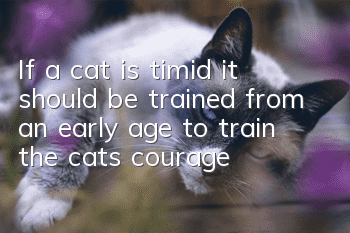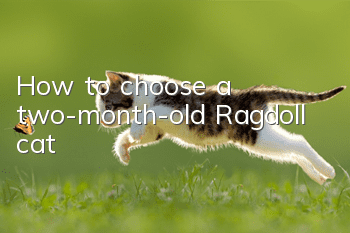A few little secrets about the psychology and physiology of cats. How much do you know about them?

Passionate people like to raise dogs, and gentle people like to raise cats. Many people are overwhelmed by the cuteness and gentleness of cats, and then fall at the feet of the cat and become its dedicated poop scoopers. If you don't play with cats often, you won't be able to understand these little secrets of cats. Only if you have a deep affection for cats and are often with cats can you know. How much do you know about the psychology and physiology of cats?
Cat hair
Cat hair is just like human skin , is a protective film on the body, which can block ultraviolet rays in summer and improve warmth in winter, so cat owners should not shave cats easily. Cat's skin contains sebaceous glands and sweat glands, and the secretions of sebaceous glands are oily, which can make the cat's coat shiny and smooth. Moreover, cats can promote their cortical production and secretion of vitamin D by basking in the sun, and then absorb vitamin D by licking their fur.
Cat’s nose
There are more than 200 million olfactory receptors in the cat’s nasal cavity, so the cat’s sense of smell is very sensitive. Moreover, cats’ noses have unique nose prints in the world. Just like human fingerprints, no cat in the world has the same nose prints as another cat.
Therefore, cats can be identified by identifying their nose prints, but they will never cooperate obediently~
Cats sometimes lick their noses to "restart" their sense of smell, and their tongues With one lick, various residues (such as pollen, dust, cat litter dust) can be completely removed from the nose to avoid affecting their thinking and judgment.
Cat’s whiskers
Cat’s whiskers are also called “sensory hairs”, which can help cats sense distance, direction and temperature, and even express emotions. Whiskers are a cat's "barometer". When they are resting, their whiskers are mostly stationary; when they are excited, such as playing or hunting, their whiskers point forward.
If the beard points back and lies flat against their face, this may be a sign of fear or a precursor to aggression, so poop scrapers can pay attention~
p>Cat’s pads
Cat’s pads look cute and soft when pinched, but cats generally don’t like people touching them. The flesh pad, because there are many sensory nerves on its flesh pad, is a very important sensory organ. Relying on the thick meat pad, the cat will not make any sound when walking, which is equivalent to a shock absorber and silencer.
In addition, because the sweat glands on the cat’s skin are not developed, and the tongue and flesh pads are the places with the most sweat glands in the cat’s body, the cat’s flesh pads have the function of wicking away sweat. In summer, we can often see If the soles of your cat’s feet are wet, that means they are sweating. andCats also have odor glands between their toes. When they sweat, the odor glands will also be discharged together, leaving a smell. For cats, this is a mark that this is their territory.
Cat’s ears
Cats’ hearing is very good, more than twice that of humans; because their ears can rotate, cats will hear sounds around them. You don't need to turn your head to identify where the sound is coming from. Cats can also balance the structure between their ears very well, adjust the frequency between the middle ear and the inner ear, and will not cause tinnitus. Even because of this function, they rarely get motion sickness. If you carefully observe a cat's ears, you can find that their ears seem to be a little "deformed". In fact, this is their normal physiological structure. This is called the "external ear flap", which can help cats detect high-frequency sounds.
Cat’s tail
The cat’s tail is the cat’s steering device, which can help the cat maintain its balance when jumping.
The reason why a cat’s tail can swing very flexibly is because its tail is lined with tail vertebrae bones. A cat with a long tail can have 18 tail vertebrae. The distance between each tail vertebrae is very large, so their tails can rotate flexibly and briskly. In addition, cats can also use their tails to repel mosquitoes and flies, assist in hunting, and express their emotions.
In fact, there are many little secrets about cats, which will indeed help us understand cats better. However, every cat is different, and you cannot copy the behaviors and habits of other cats to your own. However, using this as a reference to understand our own cats can help us learn more about our cats!
- What is the difference between Angora cat and lion cat?
- How to prevent cats from scratching walls? Get rid of cats’ bad habit of scratching walls with their claws!
- How to take care of a cat after neutering?
- How long does a pet cat generally live?
- The cat keeps meowing at night and scratching the door
- How to properly breed Siamese cats?
- How to train a naughty American Shorthair? The correct way to train an American Shorthair cat!
- Can cats eat seafood? Which seafood cannot be fed to cats?
- Can cats from the same litter breed?
- What does it mean when a cat lies down and his belly is turned out?



